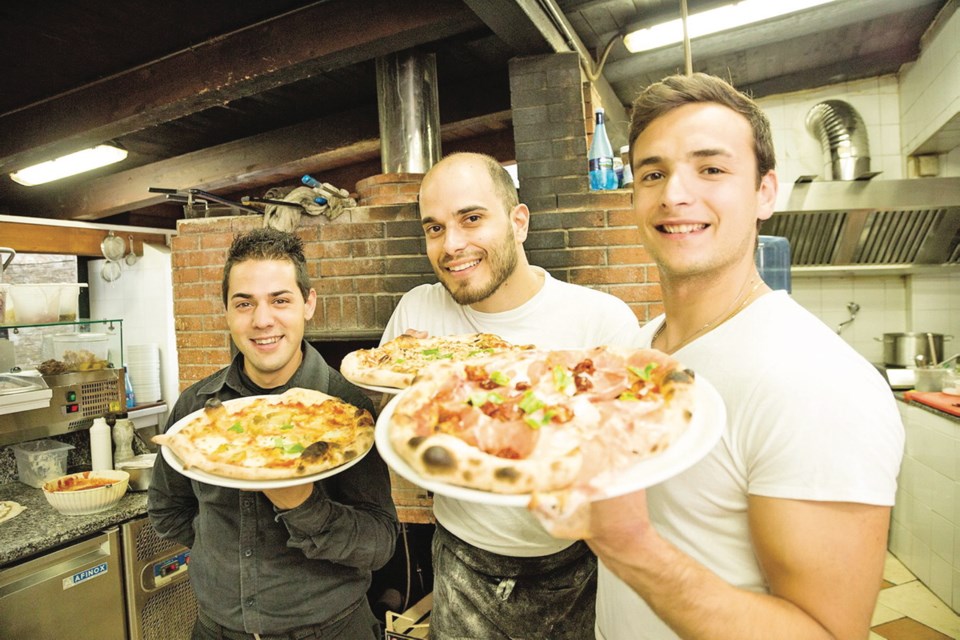It may lack the Botticellis, Guccis, and touristic icons of Venice, Florence, or Rome, but Sicily still packs a punch. This island is home to some of Europe’s most important ancient Greek sites, the most active volcano in Europe, and some of Italy’s most intriguing architecture and tastiest food. While part of Italy, Sicily really is a world apart. Midway between Africa and Europe in the middle of the Mediterranean, it’s been ruled over the last 2,500 years by Greeks, Romans, Arabs, Normans and Spaniards.
Its complicated past makes it distinct ‚ÄĒ with spicier food, a more festive lifestyle, and people who are Sicilian first, Italian second. Italian Americans have a special bond with the island ‚ÄĒ almost one-third of all Italians who arrived in the U.S. between 1880 and 1930 were from Sicily.
This past spring, I found Sicily had changed quite a bit since my last visit. Years ago, I considered Palermo, the capital city, seedy and sketchy.
My latest visit demolished my lingering Mafia images. The city is still gritty and colourful, yet its bustling centre feels safe and trendy.
Quattro Canti, the fountain-filled intersection of Palermo’s two main thoroughfares, is a fine focal point to a pedestrian area where people enjoy their evening passeggiata.
As I strolled, I found that thriving marketplaces abound in the morning and squares in nearly every neighbourhood are lively and inviting after dark.
The Cathedral of Monreale (just outside of Palermo), famous for its exquisite 12th- and 13th-century mosaics, is something that hasn’t changed. Each panel tells a story: Adam and Eve being tempted by the serpent, angels climbing Jacob’s ladder, and Noah building his arc.
Palermo also offers a great ‚Äúbone‚ÄĚ experience ‚ÄĒ skull and shoulders above anything else you‚Äôll find in Europe. Its Capuchin crypt is a subterranean gallery filled with 8,000 ‚Äúbodies without souls.‚ÄĚ
For centuries, people would line up to be ‚Äúnot buried‚ÄĚ here. They‚Äôd choose their niche in death and even stand there getting to know their macabre neighbourhood. Then, when they died, this is where they‚Äôd end up, dressed in their Sunday best.
On this year’s trip, I made a point of exploring the entire island. On the west coast, I sailed through salt flats and across a lagoon to the humble little island of Mozia. This salt-making region was a Carthaginian stronghold centuries before Christ, and you can still see Carthaginian ruins amid Roman ruins: Here, like elsewhere on the island, you’ll enjoy many layers of history.
Near Sicily‚Äôs south coast is Agrigento, with its ‚ÄúValley of the Temples‚ÄĚ ‚ÄĒ the largest, best-preserved collection of ancient Greek buildings outside of Greece. Its top temple rivals the Parthenon ‚ÄĒ not a surprise, since Agrigento was one of the richest Greek colonies and a thriving democracy 2,500 years ago.
One of Sicily‚Äôs most famous sights is Taormina, a spectacular resort city on the east coast. Hanging high above the sea, with handy cable car access to the beach, it‚Äôs long been the island‚Äôs romantic cliffside haunt of aristocrats at play. Taormina‚Äôs setting impressed the ancient Greeks ‚ÄĒ probably more for its strategic location than the view. Its Greek-Roman theater must be the most dramatically situated theatre from the ancient world ‚ÄĒ and it still hosts open-air concerts. (Paul Simon, Tony Bennett, and Elton John have performed here.)
Nearby looms Mount Etna ‚ÄĒ at 3,350 metres, it‚Äôs Europe‚Äôs biggest volcano. It‚Äôs anything but extinct ‚ÄĒ a serious eruption comes about every three years. On my visit, a gondola swept me up into a barren land of spent lava flows. At the edge of the volcano, I surveyed the landscape: The flows seemed to rumble like big black buffalo toward Sicily‚Äôs teeming second city, Catania. In the distance, a crescent beach stretched all the way to Taormina. And to my right was the hazy, high and harsh interior. In a vineyard on the slopes of this steaming volcano, I was served a glass of full-bodied red wine by a woman who could have been Sophia Loren‚Äôs younger cousin.
In addition to the wine, the food is what nearly all visitors rave about. The cuisine is Mediterranean and rich in seafood. Along with pasta, you may see couscous on the menu ‚ÄĒ a reminder that this island is just 160 kilometres from Tunisia. And for dessert: cannoli, which tastes best here in its homeland. Connoisseurs of cannoli insist on having one freshly filled ‚ÄĒ not with cream, but with sweetened ricotta cheese. I now know why they say ‚ÄúHoly cannoli.‚ÄĚ
Sicily ‚ÄĒ with a culture enriched by wave after wave of conquerors ‚ÄĒ is one of Europe‚Äôs most fascinating corners. I think of Sicily as ‚ÄúItaly in the extreme‚ÄĚ ‚ÄĒ if you like Italy for its people, tempo and joy of living, you‚Äôll love Sicily.
Rick Steves (ricksteves.com) writes European travel guidebooks and hosts travel shows on public television and public radio. Email him at [email protected] and follow his blog on Facebook.



